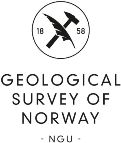

|
Norsk versjon | ||||
| THE INDUSTRIAL MINERAL DATABASE | |||||
| Deposit Area 1833 - 325 | |||||
| (Last updated 07.des.2015) | |||||
Name of Deposit Area : Altermark |
| (Object Id : 1833,325,00,00) |
| Location |
| County : | Nordland (18) | Municipality : | Rana (1833) |
| Map 1:50000: | Mo i Rana (1927-1) | Map 1:250000: | Mo i Rana |
| Marking point: | Longitude: | 13.9890480 | Latitude: | 66.3411030 |
| EU89-UTM Zone 33 | (Coordinates IS confirmed) |
| X-coord: | 454731 m. | Y-coord: | 7358297 m. |
|
|
| Commodity |
| Main Type: | Talc | Sub Type: | Talc |
| Production |
| Activity: | Mining | Reserves: | 916 thousand tons | |
| Prod. method: | Open pit and underground mining | Production: | 1000 thousand tons | |
| Prod. status: | Disused, closed | Volume of dump: | ||
| Resource estimat. standard: | Non compliant |
| Importance |
| Public: | Regional Importance (reg. 04.09.2015) |
| Economical: | Significant , (Confirmed 04.sep.2015 by Havard Gautneb) |
| Historical: | Yes , (Confirmed 20.feb.2015 by Havard Gautneb) |
Products |
| Element/product | Crude ore grade or quality | |
| SOA/TA | % |
Ownership |
| Type of ownership | Owner | Land- and title number | |
| Concessionary (Mining rights) | Norwegian Talc Altermark AS |
Operations |
| From - To | Activity | Comments | |
| 1932 | Regular production | Company/Institution :Norwegian Talc Altermark AS | |
| 1991 - 1991 | Geophysics | Company/Institution :NGU | |
| 1991 - 1995 | Detail mapping | Company/Institution :Tor Arne Karlsen | |
| 1994 - 1995 | Geochemistry | Company/Institution :Tor Arne Karlsen |
Mineralization |
| Era: | Paleozoic | Period: | Silurian | |
| Dating: | Method: | |||
| Genesis: | Metasomatic | Form: | Lens | |
| Main texture: | Structureless | Min. distribution: | Massive (>50 % ore minerals) |
| Main grain size: | Coarse grained (> 3 mm) |
| Strike/Dip: | 45 / 45 | Direction: | 45 | |
| Plunge: | 45 |
| Stratigraphic classification of host rock |
| Era: | Paleozoic | Period: | Silurian |
| Province: | ||
| Geotec.unit: | ||
| Tectonic complex: | Rødingsfjelldekkekom | |
| Igneous complex: |
| Group: | Formation: |
Mineralogy |
| Relationship | Mineral | Amount | |
| Not defined | Talc | Major mineral (>10%) | |
| Not defined | Magnesite | Major mineral (>10%) | |
| Not defined | Chlorite | Subordinate mineral (1-10%) | |
| Not defined | Magnetite | Subordinate mineral (1-10%) |
Structures |
| Location: | Type: | Orientation(360 gr.): | Relation to min.: | |
| Host rock | Shear plane | Strike/Dip :45 / 45 | Syn-mineralisation ;...Effect :Modifies | |
| Wall rock | Foliation | Strike/Dip :45 / 45 | Syn-mineralisation ;...Effect :Modifies | |
| Wall rock | Fold axis | Strike/Dip :300 / 10 | Syn-mineralisation ;...Effect :Modifies |
Information(s) in free text format |
| Free text |
| The Altermark talc mine has been a major Norwegian supplier of talc since around 1934. The mine has been mined from four different levels. Despite that the mine is located close to the big ultramafic lens termed "Annabergan", only limited amounts of mining have taken place along this body. Instead, most of the mining has taken place further north, at talc bodies associated by several smaller ultramafic lenses. Tonnage estimations were given by Karlsen (1995). More updated information from the mining company indicates that the proven reserves of the mine are approximately 150000 tonnes, probable resources 300000, and possible resources 460000 tonnes. |
Bibliography: |
| From NGU's Reference Archive: |
| Karlsen, Tor Arne , 1995 |
| Geological and geophysical studies of ultramafite associated talc deposits, Altermark, Northern Norway. |
| ;NTH Bergavd.;AVHANDLING |
| Karlsen, Tor Arne ; Rian, Edvin ; Olesen, Odleiv , 2000 |
| Overwiew of talc resources in the Altermark talc province, northern Norway, and possible uses of the talc ore |
| ;Norges geologiske undersøkelse;TIDSSKRIFTARTIKKEL;NGU Bulletin; No.436;93-102 pages |
| Abstract: | |
| Active prospecting during the past 10 years has proved that the Altermark area contains much more talc than previously recognised in the Nakkan-Esjeklumpen area, 10 M tonnes or more of talc-carbonate ore are probably present, distributed in ultramafic bodies. The ore, which occurs as one of several layers within compositionally zoned ultramafic lenses dominated by antigorite serpentinites, has the following general mineralogy; talc (45-65%), carbonate (30-50%), chlorite (0-4%) and magnetite (0-3%). Relative to other known similar deposits, the ore is rather coarse-grained, and the minerals tend to be idio- blastic. Several products can be made from the talc-carbonate ore. By applying flotation or other kinds of mineral separation techniques, it is likely that high-quality talc-concentrate could be made in addition to calc-carbonate mixtures. a concentrate of by-product breunnerite would possibly be of ecomonic value. |
| The fact sheet was created on 22.11.2024 |
| Questions or comments regarding the fact sheet can be emailed to: ressursdatabaser@ngu.no |
| Copyright © 2024 Geological Survey of Norway |